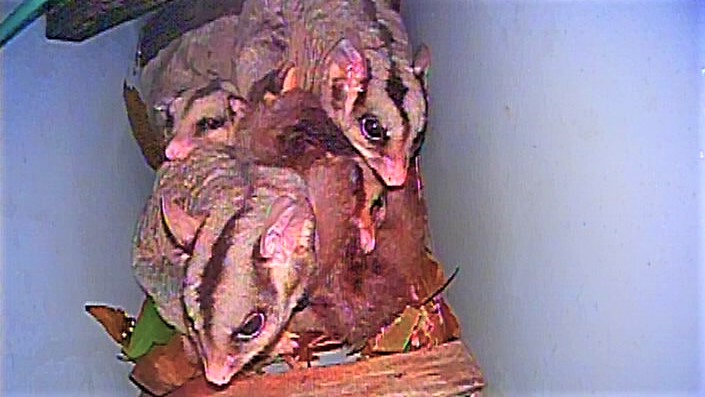Can the installation of nest boxes make a difference to our wildlife?
Introduction
Australia has the highest number of hollow-dependent species in the world! Possums, gliders and phascogales as well as lorikeets, parrots, kingfishers, owls and microbats all use hollows.1 This is no doubt due to the proliferation of Eucalypt species across the continent over many millennia. Many of these trees are long-lived and after a century or so they start to develop hollows and cavities. These naturally formed hollows provide places for these species to shelter, breed and feed.
Since European settlement, there has been a significant loss of the hollows through deforestation and degradation of habitats. This has had a significant impact on many endemic species that have evolved and depend on these hollows.2
While many landowners and managers as well as Bushcare groups are rehabilitating and where possible replanting Eucalypt bushland, it will take many decades before natural hollows become available for local wildlife. To address this problem, many people have turned to the use of nest boxes as a substitute for these hollows and in many cases this approach has made a difference, particularly to birds and arboreal mammals such as gliders and possums.
A nest box at the Chelsea Street Reserve, Rothwell.
Impact of nest boxes
The potential value of nest boxes has been reinforced by scientific research although there is still much to learn about which species they attract and the influence of their design including morphology, material, size, the type of opening (diameter and placement), the height of placement on the tree and location. Recent studies have also shown that the morphology or shape and structure influence which species utilise them. For example, researchers in Victoria discovered that some species of bird prefer hollow logs while arboreal mammals favoured the boxes.3
The use of nest boxes has also had its detractors because of their potential to attract exotic species, benefit common animals and have less value for threatened species. However, researchers conducted a study in NSW covering a large area (major road project) and were able to document nest box usage over an extended period. They found that the nest boxes were used by common species, threatened species and very few exotic animals. They also postulated that appropriately designed boxes could be a valid strategy for targeted threatened species.4
This has been a common theme throughout the research on nest boxes. There is still much to learn about their impact including their design and placement within the landscape. Therefore, only through using long-term, non-invasive monitoring programs can we gain a better understanding of their impact on our local wildlife. This strategy is necessary if we want to support our local wildlife, discourage exotic pests and help our threatened species such as the Greater Glider in Southeast Queensland and Leadbeater’s Possum in the woodlands of the Victorian central highlands.
In our local Moreton Bay region, there have been a multitude of nest boxes installed in our peri-urban and natural areas which have lost their older trees. A recent survey of the nest boxes in the Chelsea Street Reserve revealed that the boxes were being utilised by sugar gliders and brushtail possums and so supporting some of our local arboreal mammals.

A family of sugar gliders nestled in a box at the Chelsea Street Reserve
Nest boxes can never replace the variety of natural hollows within old growth forest. However, they provide a useful strategy in the short term as we wait for our regrowth forests to reach the age of hollow formation. Finally, they are a useful tool for conservation but should never be viewed as a suitable replacement for our hollow bearing trees.
Attributions
1. Land for Wildlife Technical Notes (Queensland A2) LfW-Note-ANIMALS-A2_Nest-Boxes_WEB.pdf (lfwseq.org.au) downloaded 21st July 2022
2. Wildlife WPSQ https://wildlife.org.au/nest-boxes-are-making-a-difference/ downloaded 20th July 2022
3. Bruce R. Quin, Ross L. Goldingay, Darren G. Quin, Eileen Collins, Neville Bartlett, Richard Jerome, Tony Murnane, Tony Marsh, Scott Jessup (2021). "Long-term monitoring of nest boxes and nest logs in a tree-hollow depleted box–ironbark forest in north-eastern Victoria," Australian Journal of Zoology, 68(3), 150-166
4. Goldingay, Ross & Rohweder, David & Taylor, Brendan. (2020). Nest box contentions: Are nest boxes used by the species they target?. Ecological Management & Restoration. 21. 10.1111/emr.12408.. 115 - 122


